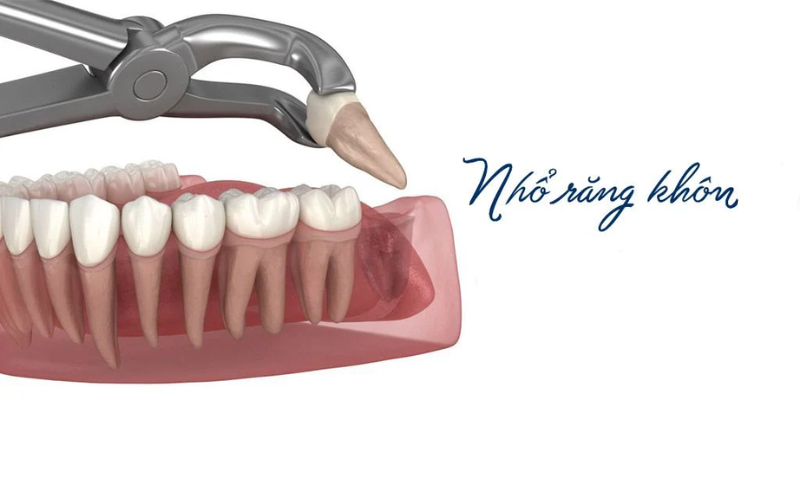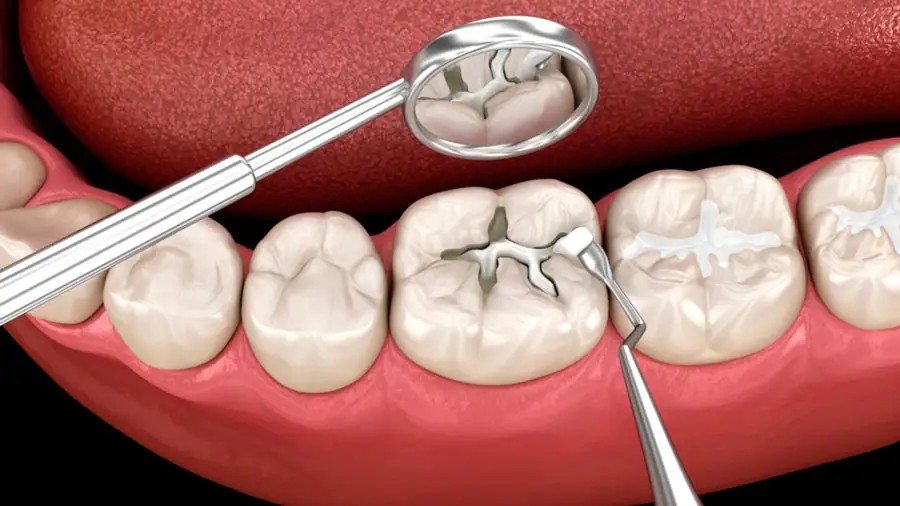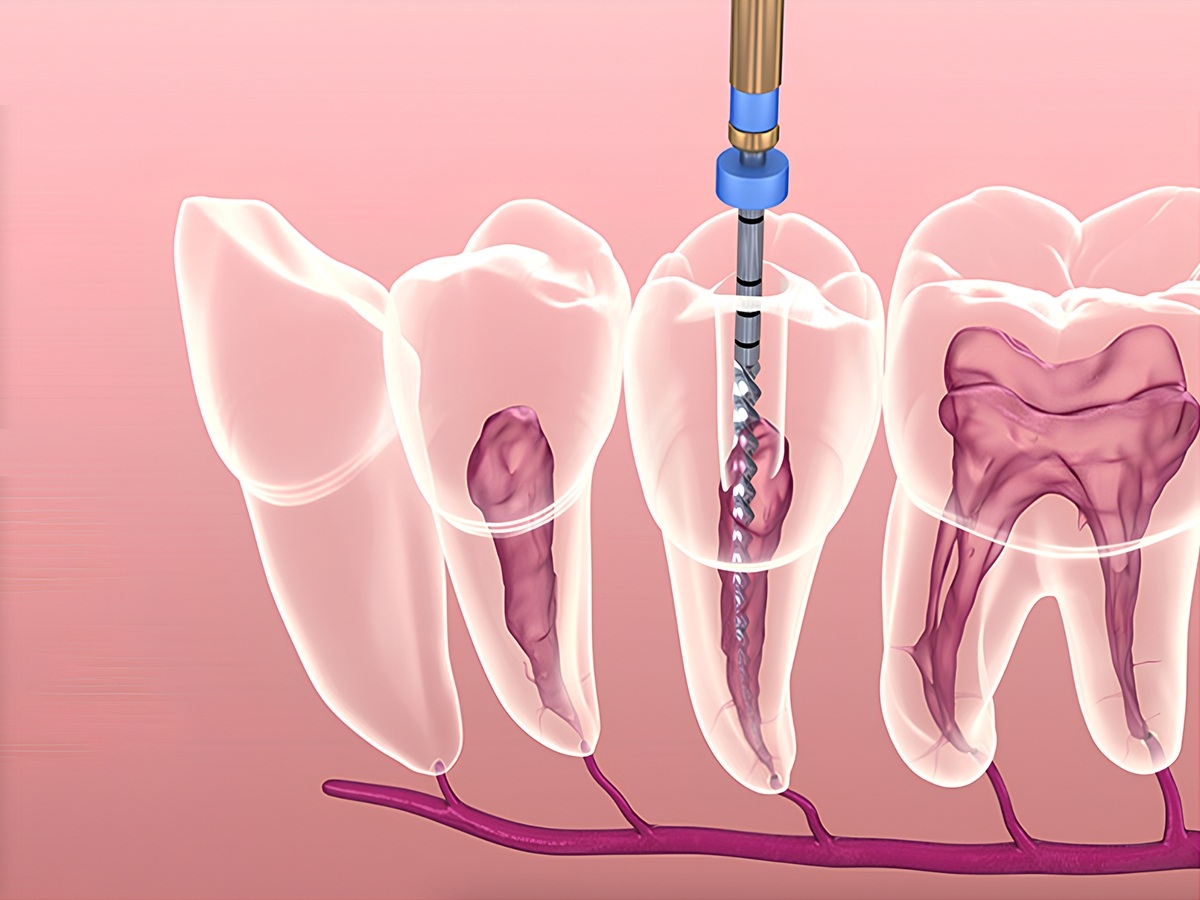We often pay attention to brushing properly, using dental floss, or choosing the right mouthwash, but easily overlook an important factor in the journey of oral care – tartar scaling. This is not merely a routine dental procedure, but a solid foundation that helps maintain healthy gums, prevent periodontitis, and reduce bad breath. Interestingly, many people only visit the dentist when symptoms become obvious, while tartar silently accumulates each day, creating ideal conditions for bacterial growth. So, why is tartar removal so important, and how often should it be done? Let’s explore with Amanda Dental Clinic right now.
What is tartar?
Tartar, also known as dental calculus, consists of stubborn plaque formed from leftover food particles, bacteria, and minerals in saliva. Over time, these plaques accumulate and harden, sticking to the surface of the teeth, especially between the teeth and along the gumline.
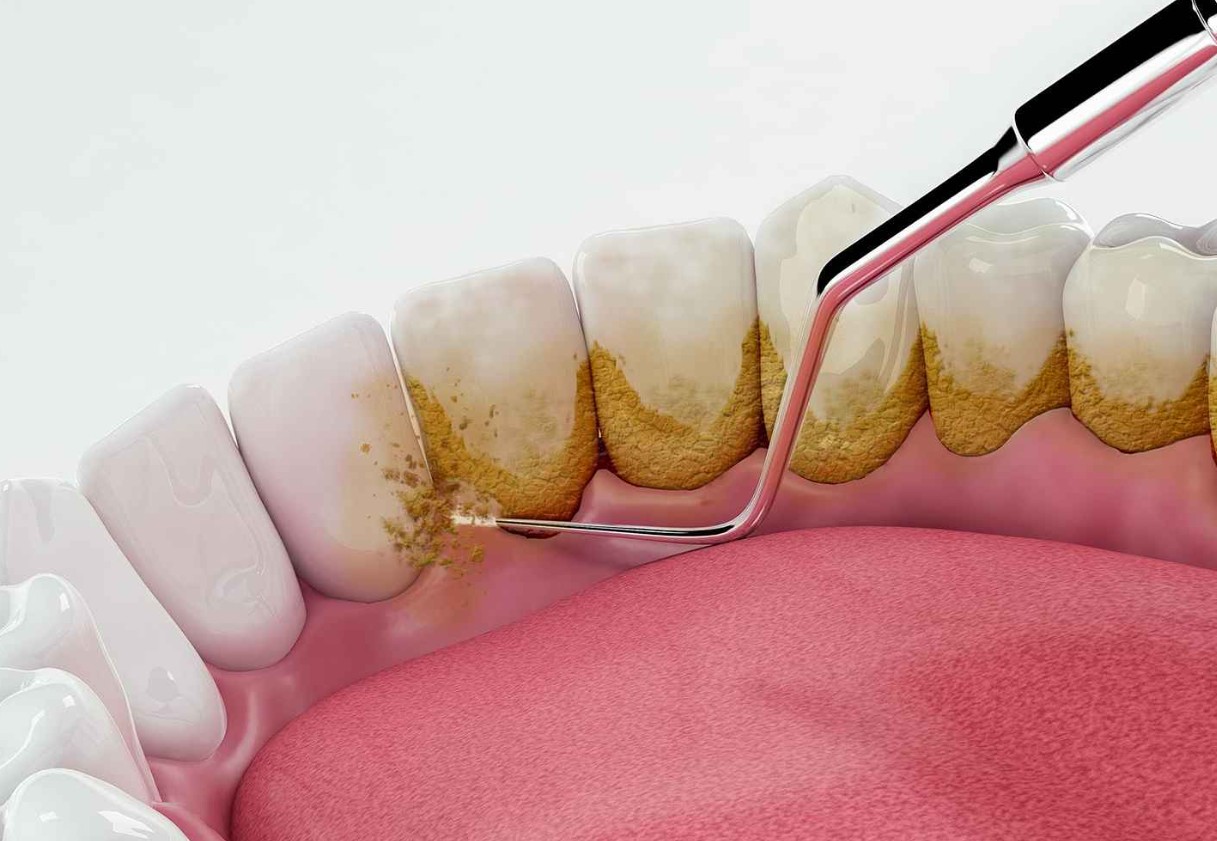
Causes of tartar formation
Tartar forms through a complex process starting with plaque accumulation. This process is influenced by several factors:
- Poor oral hygiene: Brushing improperly or skipping dental floss allows plaque to persist and develop.
- Diets high in sugar and starch: Sugary and starchy foods ferment easily, providing ideal fuel for bacteria in plaque.
- Saliva composition and pH: Saliva helps neutralize acids and remineralize enamel. However, its composition and pH vary by individual and can affect the rate of tartar formation. Highly acidic saliva can accelerate the mineralization of plaque.
- Effects of smoking: Smoking reduces saliva flow (causing dry mouth) and alters the oral microbiome, promoting the growth of periodontal pathogens and accelerating tartar buildup.
Common types of tartar and their classification
Classified by buildup stages (care opportunity):
- Early stage (level 1): Soft, thin plaque with an ivory or light yellow color. This is the ideal time to remove it entirely through proper brushing and regular flossing at home.
- Attention stage (levels 2 & 3): Plaque becomes thicker, harder, and dark yellow. This is a reminder to visit the dentist for professional cleaning to restore gum health and prevent bleeding.
- Intervention stage (level 4): Heavy accumulation and darkening. Timely treatment is essential to protect gums, maintain strong teeth, and improve breath. Intervention helps restore both health and aesthetics.
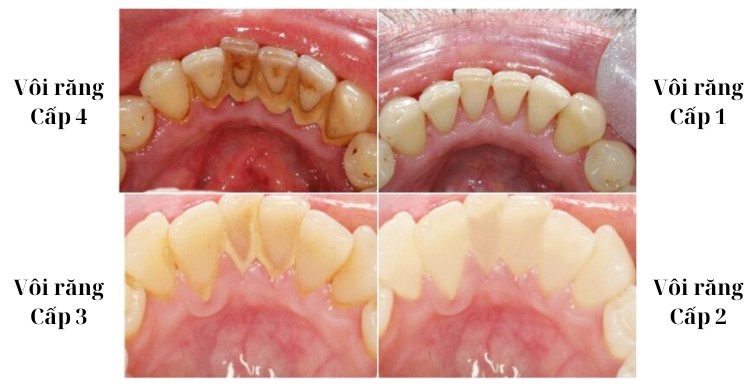
Classified by location:
- Supragingival tartar: Visible and easy to detect early for timely care.
- Subgingival tartar: Detected during regular dental check-ups, reminding us of the importance of consistent oral exams.
- Interdental tartar: Occurs in tight spaces requiring specialized tools like floss or interdental brushes, encouraging better hygiene practices.
Classified by origin (composition):
- Salivary tartar: Formed from food debris, bacteria, and minerals in saliva. Usually yellow or dark yellow, easily visible, and causes gingivitis, cavities, and bad breath.
- Serum tartar: Forms during gum inflammation and bleeding. Blood and exudate mix with plaque to create reddish-brown or black tartar under the gumline, leading to advanced periodontitis, bone loss, and tooth mobility.
Harmful effects of tartar
Tartar isn’t just a cosmetic issue; it is a key contributor to many oral diseases:
- Gingivitis: Tartar is an ideal haven for bacteria that irritate and infect gums. Gums become red, swollen, and bleed easily during brushing or flossing.
- Periodontitis: If gingivitis is left untreated, it may develop into periodontitis – a serious infection that destroys the structures supporting teeth. It can cause gum recession, bone loss, loose teeth, and eventually tooth loss.
- Bad breath: Bacteria in tartar break down food particles and release foul-smelling sulfur compounds.
- Yellowed and stained teeth: Tartar absorbs pigments from food and drinks, leading to yellowing and dullness, affecting appearance.
- Sensitive teeth: Tartar may expose tooth roots, increasing sensitivity to hot, cold, or sweet foods and drinks.
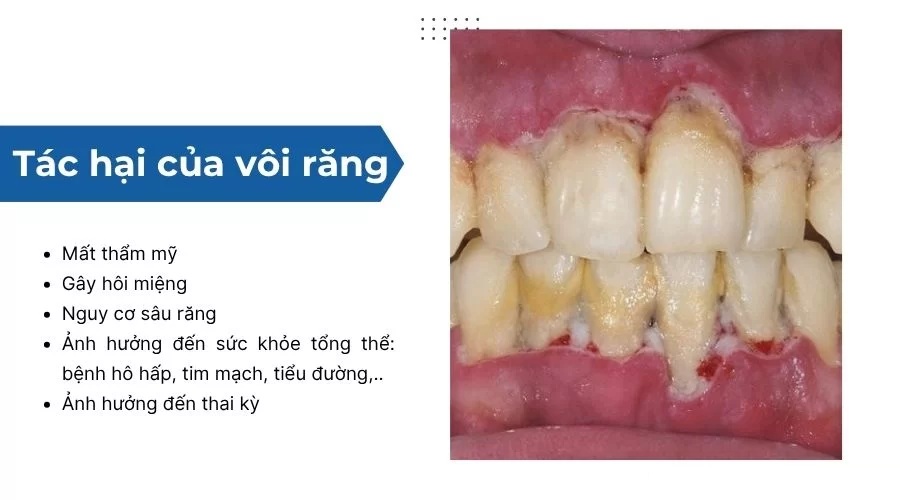
Benefits of tartar removal
Removing tartar provides not only immediate benefits but also long-term positive effects on oral health.
- Effectively prevents oral diseases: Tartar removal eliminates inflammatory triggers and reduces harmful bacteria in the mouth. Clinical studies have shown significant risk reduction for:
- Gingivitis and periodontitis: Tartar removal reduces gum inflammation, helps strengthen gums, and prevents the progression of periodontal disease, one of the leading causes of tooth loss in adults.
- Tooth decay: Tartar creates conditions for plaque accumulation and acid production. Removing tartar helps control plaque and lowers the risk of cavities.
- Improves aesthetics and confidence: Tartar removal eliminates yellow stains and deposits on teeth surfaces, making teeth appear whiter and cleaner. This enhances your smile and boosts confidence in communication.
- Reduces long-term dental costs: Prevention is always cheaper than treatment. By regularly removing tartar, you can prevent serious oral issues and reduce future costs such as root canal treatments, extractions, or implants.
- Controls bad breath and improves overall health: Tartar harbors odor-causing bacteria. Its removal reduces bacterial load and improves breath freshness. Some recent studies also link periodontal disease (caused by tartar) with systemic diseases such as heart disease and diabetes.
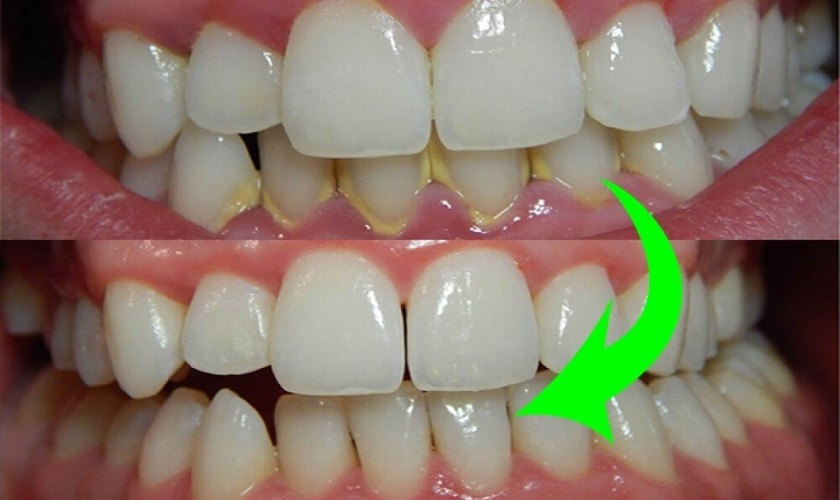 Benefits of regular tartar removal on oral health[/caption]
Benefits of regular tartar removal on oral health[/caption]
Who should get tartar removal?
While tartar removal is a crucial preventive procedure for everyone, certain groups should pay special attention and may require more frequent cleanings.
- People with visible plaque: Plaque is a biofilm of bacteria constantly forming on teeth.
- Smokers or frequent coffee/tea drinkers: These habits increase the risk of gum disease and tartar accumulation.
- People with gingivitis or periodontitis: Diagnosed individuals need more frequent tartar cleanings to control and prevent progression of the disease.
- People with crowded or hard-to-reach teeth: Crowded teeth or complex restorations create hygiene challenges, increasing tartar buildup.
- Orthodontic patients (braces): Braces create many areas where food and plaque can accumulate, making oral hygiene more difficult.
- Pregnant women: Hormonal changes during pregnancy increase gum inflammation. Scaling helps protect both mother’s and baby’s oral health.
- People with systemic diseases: Conditions like diabetes, cardiovascular diseases, or immune suppression increase the risk of gum disease, requiring more regular cleanings.
General Recommendation: Most reputable dental organizations recommend a professional tartar cleaning every 6 months for healthy adults. This frequency helps remove buildup before it causes serious issues.
Popular methods of tartar removal today
To remove tartar, dentists use specialized scaling methods. Here are some common approaches along with their pros and cons:
Ultrasonic scaling
Currently the most popular method, using high-frequency ultrasonic waves to create small vibrations that break up and remove tartar from tooth surfaces.
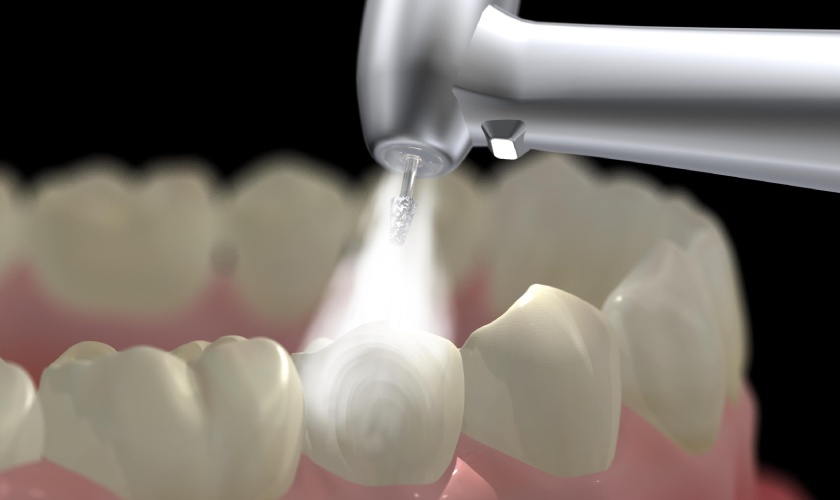
Advantages:
- High effectiveness: Ultrasonic waves break even the most stubborn tartar, providing thorough cleaning.
- Less pain: Causes less discomfort and sensitivity compared to traditional methods, offering a more comfortable experience.
- Safe for enamel: Gentle on the tooth surface, does not damage enamel.
- Quick procedure: Usually completed quickly, saving time.
- Minimal bleeding: Helps reduce gum bleeding during the process.
Disadvantages:
- Mild sensitivity: May cause slight discomfort in people with sensitive teeth.
- Less effective on very hard tartar: May be less efficient in inaccessible or heavily calcified areas.
- Requires skill and expertise: Dentists must be well-trained and experienced to operate safely and effectively.
- Higher cost: More expensive than manual scaling due to equipment and expertise required.
Manual tartar scaling
Manual scaling is the traditional method using handheld dental instruments to remove plaque and tartar from tooth surfaces.
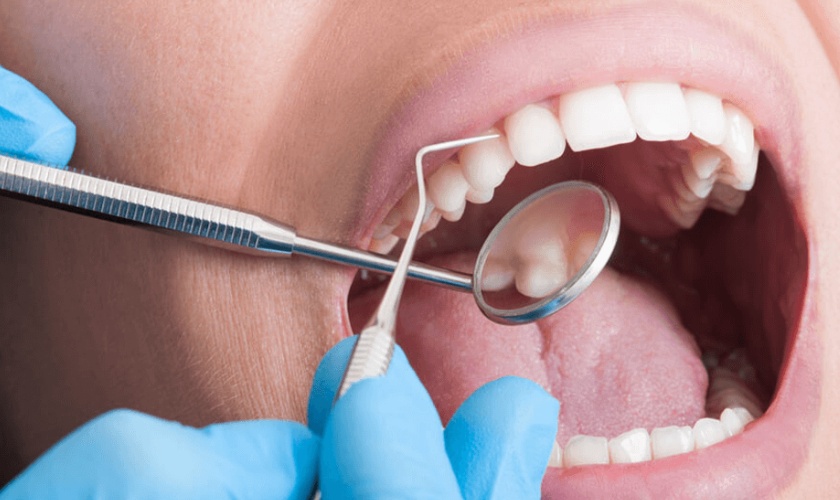
Advantages:
- Suitable for stubborn tartar and hard-to-remove buildup
- Can reach areas ultrasonic devices may miss
- No noise – ideal for patients sensitive to machine sounds
- Greater control over pressure applied to teeth
Disadvantages:
- Takes more time than ultrasonic scaling
- May cause more discomfort and pressure for patients
- Requires high skill from the dentist
Laser tartar scaling
Laser scaling is a modern method using laser beams to effectively remove plaque and tartar.
Advantages:
- Less pain: Generally less painful than other methods.
- No noise: Does not produce loud sounds like ultrasonic devices.
- Antibacterial ability: Laser can kill bacteria, reducing infection risks after treatment.
Disadvantages:
- High cost: More expensive than traditional methods.
- Less widely available: Due to high equipment cost and the need for highly skilled dentists, it is not yet commonly offered.
Which method is right for you?
The best method depends on the severity of tartar, tooth sensitivity, and your budget. Consult your dentist to determine the most suitable option.
Standard dental tartar removal procedure
A professional tartar cleaning typically includes the following steps to ensure safe and effective tartar removal while providing a comfortable experience:
Step 1: Examination and consultation: The dentist performs a general oral check to assess tartar, gums, and other oral health conditions. Based on the results, the most suitable method will be recommended.
Step 2: Oral cleaning: The patient rinses with an antiseptic solution to reduce bacteria. The dentist may use a professional toothbrush or tools to remove soft plaque and food debris.
Step 3: Tartar removal:
- Ultrasonic scaling (if chosen): An ultrasonic tip is gently placed on the tooth surface to break and flush out tartar with continuous water flow.
- Manual scaling (if chosen): The dentist uses scalers and curettes to meticulously remove tartar, especially in hard-to-reach areas.
- Laser scaling (if chosen): Laser beams are applied to break tartar and remove it. This method is often painless and antibacterial.
Step 4: Tooth polishing: A polishing brush attached to a dental handpiece and polishing paste are used to smooth tooth surfaces and remove stains, enhancing brightness and reducing future plaque buildup.
Step 5: Post-cleaning care guidance: Dentists advise on proper brushing, flossing, and mouthwash use. Patients are recommended to avoid sugary foods, soft drinks, and harmful items. Regular follow-ups (every 6 months) are scheduled for check-ups and cleanings.
How much does tartar removal cost?
The cost of tartar removal is not fixed and depends on several key factors:
- Severity of tartar buildup: This is the main cost factor. The more extensive and hardened the tartar, the more time and technique are required, resulting in higher costs. We typically classify tartar into levels (e.g., level 1, level 2…) to assess its severity.
- Scaling method: There are various methods, from manual tools to ultrasonic scaling. Ultrasonic methods usually provide better results, cause less sensitivity, and are more comfortable—but may be slightly more expensive.
- Reputation and experience of the dental clinic: Reputable clinics with experienced dentists and modern equipment often charge higher fees. However, you get guaranteed service quality, sterile procedures, and the best treatment outcomes. Don’t focus only on price—choose trusted clinics to protect your oral health.
- Additional factors: Some clinics may charge extra for consultation, exams, or add-on services like tooth polishing after scaling.
Reference price list for tartar removal at Amanda Dental Clinic:
| Service | Price (VND) | Description |
| Scaling and polishing | ||
| Level 1 | 02 Arches | 100,000 |
| Level 2 | 02 Arches | 150,000 |
| Level 3 | 02 Arches | 250,000 |
| Air polishing scaling + oral spa | 02 Arches | 680,000 |
Why choose Amanda Dental Clinic for tartar removal?
Amanda Dental Clinic is a reliable option for tartar scaling, for the following reasons:
Professional dental team:
- Amanda Dental boasts a team of experienced, well-trained dentists specializing in Odonto-Stomatology who regularly update their professional knowledge.
- Our dentists perform tartar scaling with care and precision, minimizing discomfort and sensitivity for patients.
Modern technology:
- Amanda Dental invests in advanced equipment and technology to ensure fast, safe, and effective scaling procedures.
- High-tech tools help completely remove tartar, even in hard-to-reach areas.
 Nha khoa Amanda địa chỉ cạo vôi răng uy tín
Nha khoa Amanda địa chỉ cạo vôi răng uy tín
Safe and standardized dental procedures:
- Amanda Dental strictly follows sterilization protocols to ensure absolute safety during treatment.
- The scaling process follows medical standards, protecting enamel and gums while minimizing complications.
Dedicated, thoughtful service:
- Amanda Dental prioritizes customer care, offering dedicated and thoughtful service to create a pleasant experience.
- Our friendly consultants are always ready to answer any questions about tartar removal.
Modern, comfortable facilities:
- Amanda Dental provides a modern and well-equipped environment that ensures comfort and peace of mind for all patients.
Post-scaling care tips you should know
Tartar removal plays a vital role in eliminating factors that cause gum inflammation and oral diseases. To optimize results and protect your oral health, take note of the following:
Dietary considerations:
- Avoid overly hot or cold foods: Your teeth and gums may be sensitive after scaling. Avoid extreme temperatures in the first few days.
- Choose soft foods: Opt for soft, easy-to-chew options like porridge, soup, yogurt, smoothies… to avoid pressure on your teeth and gums.
- Avoid hard, chewy, or overly sweet foods: These can injure gums and promote bacterial growth.
- Limit dark-colored drinks: Beverages like coffee, tea, and sodas may stain teeth.
- Stay hydrated: Drinking water helps cleanse the mouth and support healing.
- Consume foods rich in vitamins and minerals: Vegetables, fruits, and dairy products help strengthen your oral health.
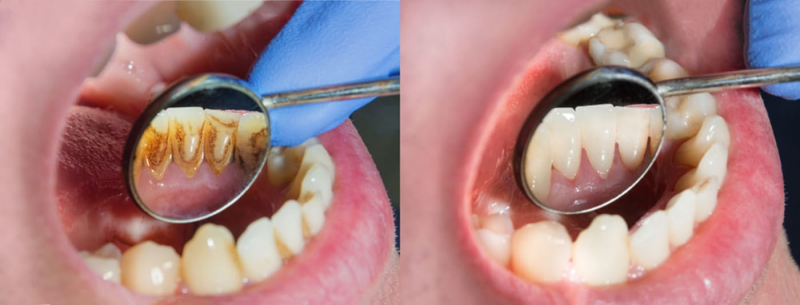 Things to remember after scaling
Things to remember after scaling
Oral hygiene tips:
- Brush gently: Use a soft-bristled toothbrush and avoid aggressive brushing that may harm your gums.
- Use mouthwash: Antibacterial mouthwash reduces inflammation and prevents infections.
- Use dental floss: Floss removes plaque and food debris between teeth.
- Avoid smoking: Smoking slows gum recovery and causes other oral problems.
Follow-up schedule:
- Attend follow-up appointments as scheduled: Regular checkups help detect and treat potential problems early.
- Typically, follow-up visits for tartar removal are every 3–6 months.
To help you better understand tartar removal methods, we’ve compiled the most complete and accurate information. Choosing the right method depends on your dental condition. Don’t hesitate to contact Amanda Dental Clinic via hotline 090 423 8988 – 098 292 0476 or book a consultation HERE to receive professional support from our doctors.




